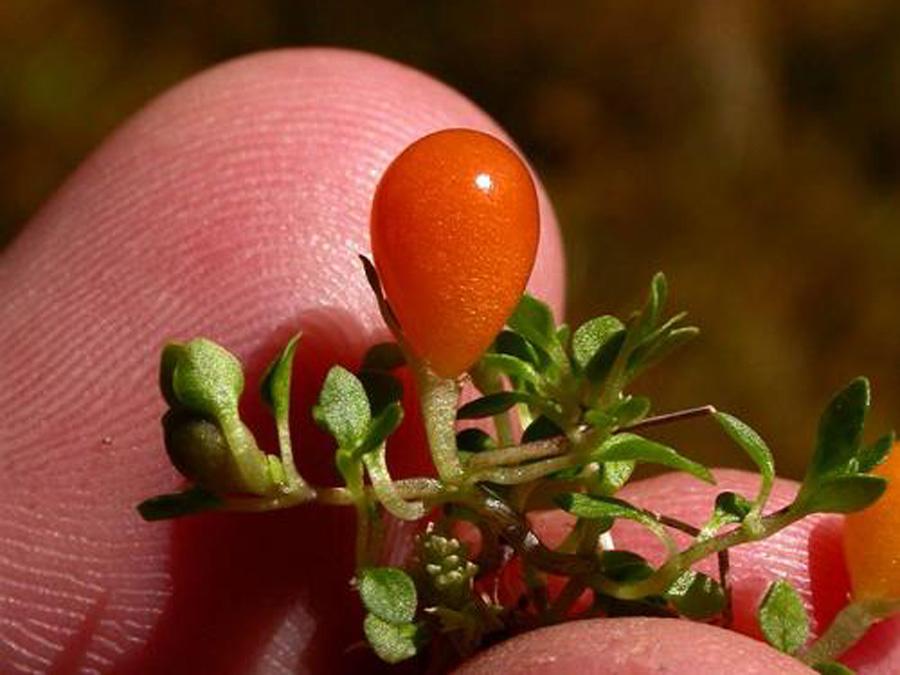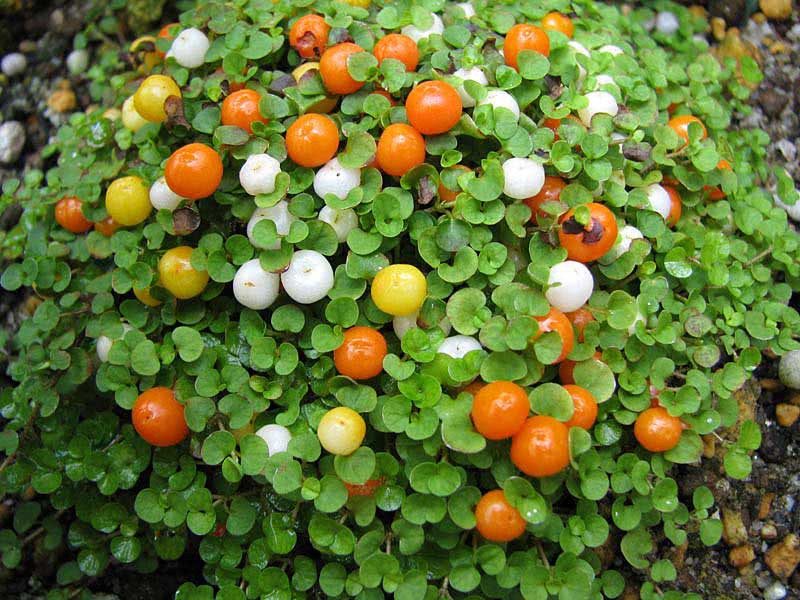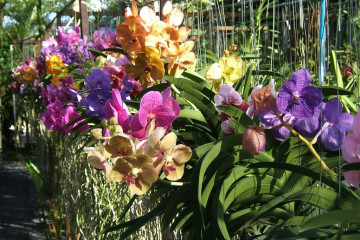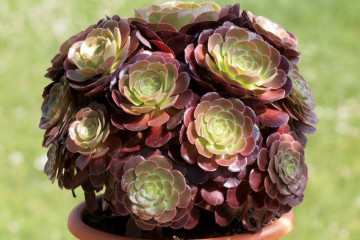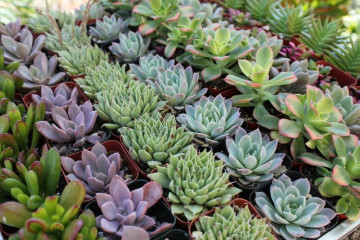Nertera: home care and main varieties
Content:
Nertera belongs to the Marenov family. Mexico and South America are considered her homeland. It is a low, creeping plant, with small rounded leaves and white flowers, which then turn into berries. It is also called coral moss.
Main types
Currently, there are about 12 species of nertera. In Russia, nertera is a one year old plant. To grow a plant for a longer period, it is necessary to create favorable conditions.
There are several popular varieties. They are loved for their beautiful cluster of bright berries.
Nertera granadensis
Nertera Granada, or nertera Granadenzis, comes from Mexico. It is a stunted perennial with green stems and small leaves. The leaf is elongated, semicircular, 3 to 7 mm long.
Flowering begins in May. The flowers are small, yellow-green. When the plant has faded, small berries form. They do not crumble for a long time, creating a beautiful composition. This is the reason for the high popularity of the Granada nertera.
Providing nertera Granadenzis mix home care in accordance with all the recommendations, you can get a beautiful decorative flower, sprinkled with bright berries.
Nertera astrid
Nertera Astrid has a second name for Nertera Orange. It is due to the close arrangement of orange berries, while the leaves are very small.
During the period of covering with berries, the flower looks like a bright orange ball.
Nertera depressa
Nertera pressed from South America. It is a low, ground cover plant. After flowering, it is sprinkled with small orange berries. If you plant a flower in a container, then it will completely cover it, forming a green-orange composition.
Nertera balfouriana
Nerthera Balfour is a low-growing plant. It differs from other species in long stems with green rounded leaves. This species has white flowers, small, like stars. When ripe, the berries are orange, in the form of droplets.
In the nature of nerter, the flower grows for several years. In culture, it is cultivated as an annual plant.
Growing and care
Although the plant is small, it is very demanding on growing conditions. He needs warmth, but direct sunlight is destructive. In addition to the temperature regime, it is necessary to create a certain humidity. And for wintering, a special regime is needed. Only under certain conditions does nertera grow. Home care, in compliance with all recommendations, will allow you to cultivate it as a perennial.
Watering
During the growth period, watering is carried out 2 times a week, the soil moisture is monitored. In winter, the soil is kept slightly moist, watered with caution and rarely. In the spring, when leaves appear, watering begins as usual.
Temperature
For good growth, nertera do not need heat. During the active period (spring, summer), a favorable temperature regime is + 20-22 degrees. In autumn, the temperature begins to gradually decrease, by the end of autumn maintaining it in the region of + 10-12 degrees. The plant hibernates at +10 degrees in good lighting. During wintering, the room is ventilated. With the beginning of spring, when the temperature is set at least +5 degrees, the flower is taken out into the street. Choose a place where there are no drafts. The nertera is brought into the room after the berries appear.
Humidity
During the growth period, a certain humidity is maintained for nertera.To do this, it is sprayed. They take boiled water. As soon as the first flowers bloom, the procedure is stopped and water is not allowed on the berries. To ensure the desired level of humidity, the container with the flower is placed in a pallet with damp peat.
An air humidifier is also used to create a favorable microclimate.
Illumination
The flower is placed in partial shade, as it does not tolerate direct sunlight. In winter, the room where the nertera stands should be well lit. Additionally, artificial light is used. In this case, its source should be at a distance of about 0.5 m from the flower, otherwise the stems will stretch out and the plants will become unattractive.
Soil and fertilizing
For good growth, choose a loose soil that retains moisture well. You can cook it yourself, for this, mix in equal parts:
- humus;
- peat;
- leafy ground;
- sod land;
- sand.
During growth, monthly fertilizing is carried out with complex fertilizer.
Reproduction methods
There are 2 ways to breed nertera:
- Division of rhizomes;
- Seeds.
Each of the planting methods is used in a certain period.
Rhizome division
The beginning of summer, when the berries are crumbling, is the time for propagation by cuttings. Part of the rhizome is separated and added to the prepared soil. There should be drainage at the bottom of the pot. For its manufacture, expanded clay or clay shards are used.
Seeds
The middle of winter is the time to sow nertha seeds. First, a soil mixture is prepared: sand, leafy soil and peat are taken in equal proportions. Drainage is required at the bottom of the tank. The seeds are sown on a moistened surface, making sure that they do not come into contact with each other. They are sprinkled with a small layer of soil, which is moistened with a spray bottle. Place the container in a warm place. As soon as shoots appear, the container is placed on the windowsill, shaded so that direct sunlight does not damage the thin stems. Water when the soil dries.
Features of nertera fruits
After flowering, which lasts for several weeks, fruits appear - small spherical berries. They look like beads. There are so many of them that the greenery is practically invisible.
As they mature, they change color. They are pale green at first. Then they turn pale, turn white, then cream, gradually acquiring different shades of orange (depending on the variety).
The berries ripen unevenly, so the plant is sprinkled with multi-colored fruits for a long period. Ripe berries shine beautifully in artificial lighting.
Poison content
Since the decorativeness of the plant is due to a large amount of poison, it is dangerous. In homes where there are small children, you should be especially careful when growing poisonous nerta.
It is recommended to be careful when transplanting seeds. It is advised to take berries in hands with gloves.
When growing nertera, you can face a number of difficulties: wrinkling of fruits, discoloration of the leaves or their drying out, rotting of the stems. All difficulties can be overcome. If you follow all the recommendations for caring for nertera, you can get a beautiful coral berry. She will become a real decoration of the house. The flower looks especially attractive as a table decoration, creating competition for live bouquets.


